The ToF-qSIMS Workstation from Hiden Analytical uniquely integrates both quadrupole and time-of-flight analyzers in a single SIMS instrument.
The surface is the place where materials interact with the surroundings, allowing contamination, corrosion, deposition and adhesion to take place. The ToF-qSIMS is the tool to define and resolve such issues in this region.
The ToF analyzer has a high mass resolution and high mass range, enabling the static SIMS mode to detect species, particularly organics, on the exposed surface of a material. The analyzer has been designed to detect surface contamination as thin as a single atom; for example, contamination such as peeling off a coating or failure of an adhesive bond, which may later impact the product operation.
In just a single scan, the ToF-qSIMS creates an image of all molecules and elements from a surface (a full mass spectrum for every pixel), enabling researchers to examine the chemical distribution, either in real time or perhaps years after the acquisition.
The ToF-qSIMS quadrupole analyzer is used for high-sensitivity 'in-depth' measurements with nanometer accuracy, like determining layer structure, or diffusion, within semiconductor materials or hard engineering applications.
The analyzer can detect all elements ranging from hydrogen to uranium and image their distribution in 3D, thus providing a highly robust technique to define the top microns of a material.
Equipped with the highly dependable Hiden IG20 gas ion source and automated settings, the ToF-qSIMS Workstation can be easily used in a production environment and allows scientists to enjoy the latest settings of this multipurpose tool.
SIMS is extensively used in the coating, aerospace, photovoltaic, semiconductor, glass and pharmaceutical industries, as well as in metallurgical, general materials and corrosion analysis.
Key Features
- Time-of-Flight analyzer offers parallel detection of secondary ion species for extremely surface-specific measurements
- The combination of high mass resolution (>1500 M/∆M) and high mass range (up to 10 kg) helps collect characteristic fingerprint spectra for unequivocal identification of contaminants, catalysts, pharmaceuticals and polymers
- X Quad SIMS allows high dynamic range and ultra-high-resolution depth profiling, both improved for dynamic SIMS
- X Hyperspectral imaging is a mass spectrum for every pixel in the image and enables interactive analysis of samples any time following data acquisition
Time of Flight—Perfect for Static SIMS Analysis
The sample is initially hit by a low dose of primary ions (below 1012 ions per cm2 is believed to be the highest dose limit for static SIMS) that lead to the emission of top monolayers.
The low dose implies that separate primary ions both affect the virgin areas and sputter huge characteristic fragments that can be utilized to detect the material. The parallel detection ability of the ToF-qSIMS Workstation allows the entire spectrum to be gathered before the static limit is surpassed, while the sensitivity at high mass offers spectra that are rich in high mass fragments.
The isotopic detection and the exceptional mass resolution enable unambiguous detection of such species.
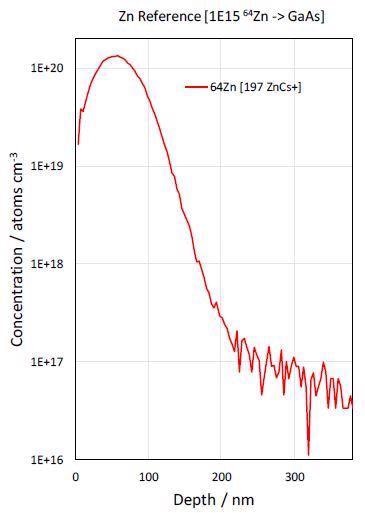
Retaining the proven MAXIM Quadrupole analyzer gives the ToF-qSIMS a no-compromise performance in high depth resolution, high sensitivity depth profiling—depth profile with quadrupole or ToF detection. MCs+ analysis of Zn implant in GaAs semiconductor. Image Credit: Hiden Analytical
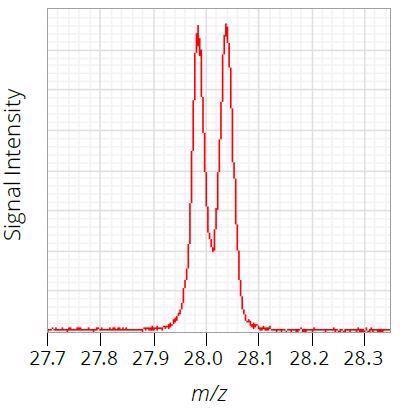
Mass resolution is typically M/∆M 1500. Easily separates 28Si (27.977u) from C2H4 (28.031u). Image Credit: Hiden Analytical
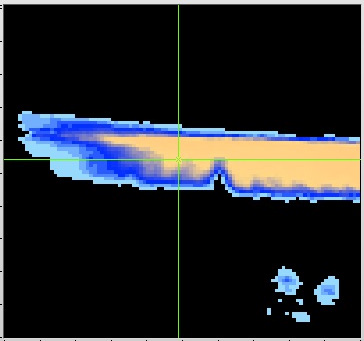
Razor blade (field of view 2 mm2). 31CF from Lubrication. Image Credit: Hiden Analytical
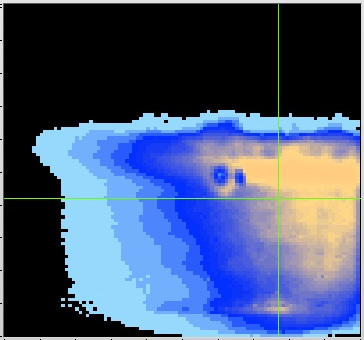
Razor blade (field of view 2 mm2). 23Na from heat treatment. Image Credit: Hiden Analytical
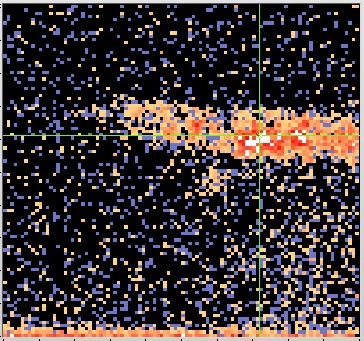
Razor blade (field of view 2 mm2). 94Pt corrosion prevention on cutting edge. Image Credit: Hiden Analytical
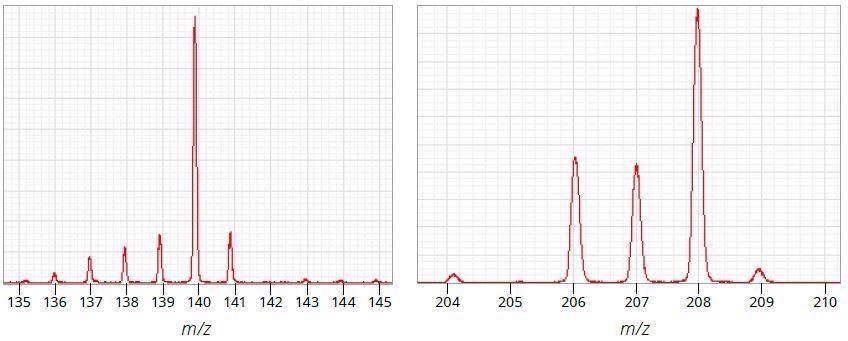
Gunshot residue—lanthanide species and lead from the cartridge primer are isotopically detected on paper placed near to a discharging firearm. Image Credit: Hiden Analytical